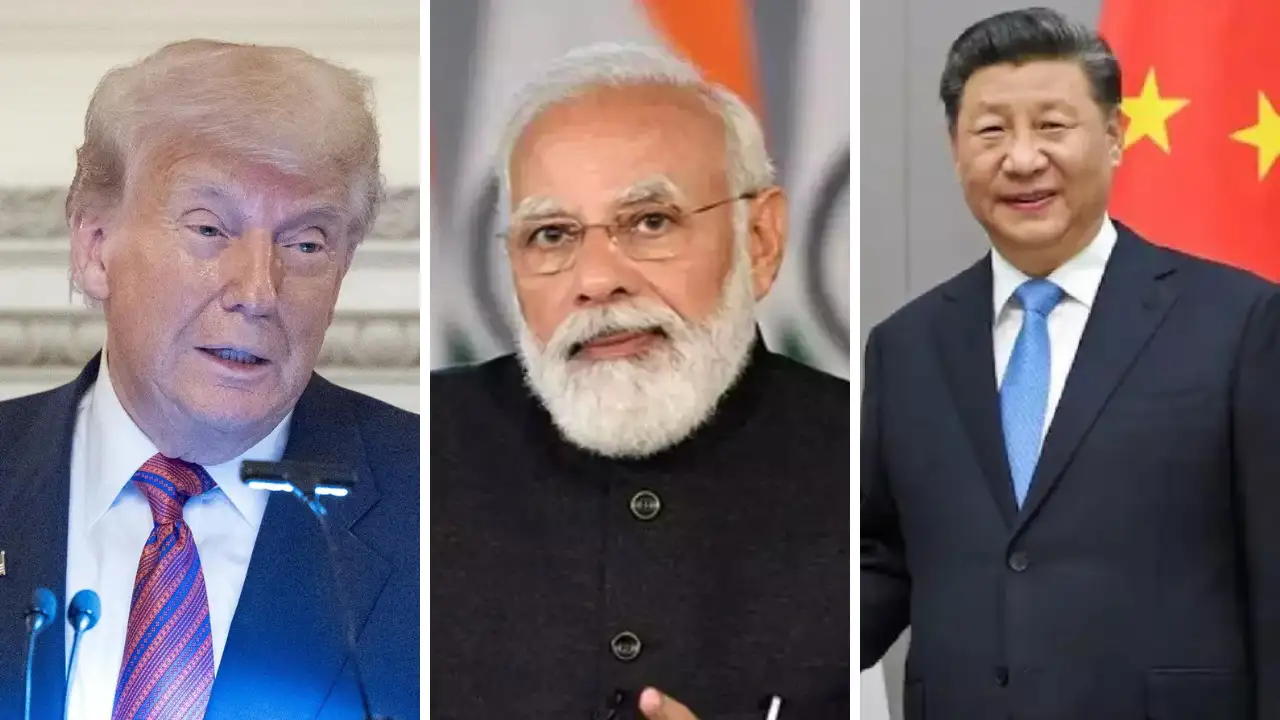By CHIDANAND RAJGHATTA
Copyright indiatimes

TOI correspondent from Washington: In the hand tools section of the Ace Hardware store outside Washington DC, the medium-sized monkey wrench you check out is still priced $ 19.99. The price hasn’t changed in over a year, but the salesman warns that won’t last for long. Almost all hand tools coming into America are imported from China, India, and Vietnam, and Trump tariffs are certain to bump up the prices once the current inventory runs out, he says. The US just does make enough hand tools and some of the oldest manufacturers like CS Osborne, Wright Tools, and Klein Tools have struggled to survive the onslaught of cheaper foreign imports. Back in Mumbai, companies like Jyoti Steel and Taparia Tools, which makes stainless steel flat bars and pliers, wrenches and spanners respectively, have shipped off every tool, device, and implement they could rustle up before the Trump tariff kicked in. So much so that export figures actually ticked up in the April-May-June quarter. But the real pain will come soon, warns Pankaj Chadha, chaiman of the Engineering Export Promotion Council in India, particularly if there is no resolution to the 25 percent “Russian oil penalty” on top of the 25 percent tariff that the MAGA boss imposed on India. With 25 percent tariff, there was some chance to compete against Vietnam, which copped 19 percent. At 50 percent, no chance. Meanwhile, India’s pain isn’t going to result in any gain for the American consumer, who will pony up a tariff surcharge for the wrenches and spanners the US President has thrown in the works because the American importer and the retailer will pass on the higher cost to the buyer. US toolmakers, a dying breed, are not geared to produce to hand tools in the volume America needs, and even if they did, they wouldn’t be able to match the price of the imports even with the tariffs tagged on. Wait a couple of months, that’s when it will begin to bite, the hardware salesman chirps. And bite all around, says Chadha from Mumbai, whose organization is lobbying the Indian government for help. Businesses in both countries, indeed across natiions, are hurting. Which is why Trump minions are rushing around the world trying to sew up trade deals that are not really meeting the lofty expectations set up by the US President when he first threw a spanner in the works. Almost six months after he dropped the “Liberation Day” tariff bomb, it turns out that American consumers and producers are also experiencing the fallout, not just exporters across the world. The US media is replete with stories of granaries overflowing with unsold soybeans and corn that China has disdained, choosing to buy from Brazil after being hectored by Washington. Job numbers are down, Inflation is ticking up, and there is a discernible rise in prices that businesses say will become more evident in the months ahead. In fact, such is the adverse reaction across the world to the belligerent American tone that it is US mandarins who are now going around trying to wrap up trade deals rather than other foreign delegations trooping into Washington as they did in the initial weeks. This week, American negotiating teams are meeting their Chinese counterparts in Spain and Indian counterparts in New Delhi, even though US Commerce Secretary Howard Lutnick said last week that Trump had invited India’s commerce minister to Washington DC. The Indian team did not turn up, so its the India pointman at the USTR, Brenden Lynch, the domain expert for all things commerce with India, who’s had to fly to New Delhi for talks. Not that it stopped Trump’s trade hitman Peter Navarro from gaslighting on the issue, claiming in a CNBC interview on Monday that India had reached out for talks. If anything, according to the Wall Street Journal, the US President got the cold shoulder from Modi after he began dissing New Delhi. In a story headlined Modi’s Strategy for Mending Ties With Trump: a Stiff Upper Lip, it cited an Indian official saying the US sought a leader-level phone call the week of July 28 to help break an impasse over trade, but India was reluctant.There are now growing signs that the US has shot itself in the foot with its tariff tantrums. Over the weekend, amid dismal job numbers, commerce secretary Lutnick said ‘The economy that Donald Trump owns starts at the end of this year.” On Tuesday, Trump called for ending quarterly earnings reports and switch to companies reporting every six months, because, he said, “ it will save money, and allow managers to focus on properly running their companies.”Most striking was Trump’s outreach to South Korea after his immigration enforcers had handcuffed and deported almost 400 South Korean workers from a Hyundai plant in Georgia for working with the wrong kind of visas, causing outrage in Seoul, where some of the returning workers swore never to return to the US. “I don’t want to frighten off or disincentivize Investment into America by outside Countries or Companies. We welcome them, we welcome their employees, and we are willing to proudly say we will learn from them, and do even better than them at their own “game,” sometime into the not too distant future!” Trump wrote on Truth Social.



